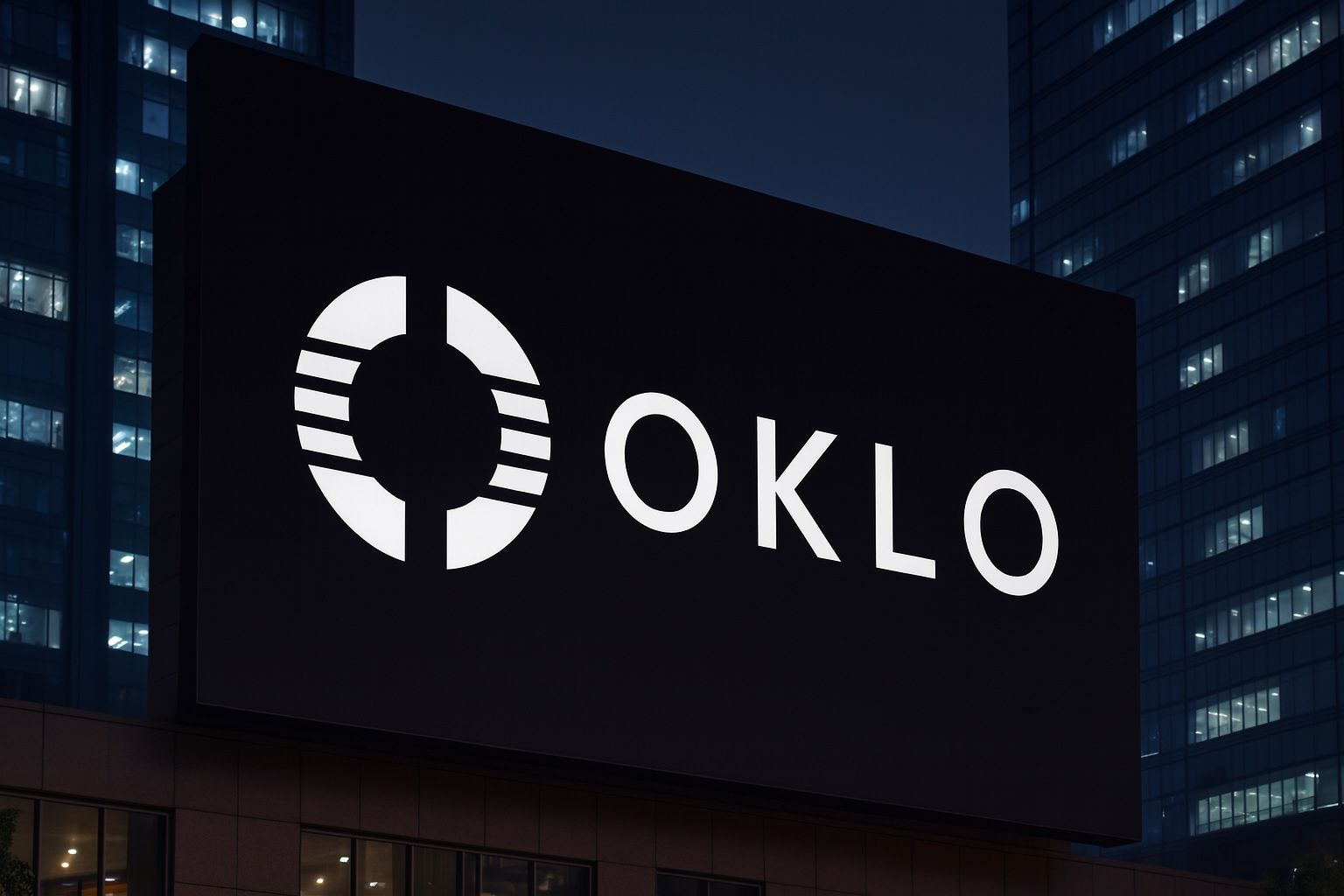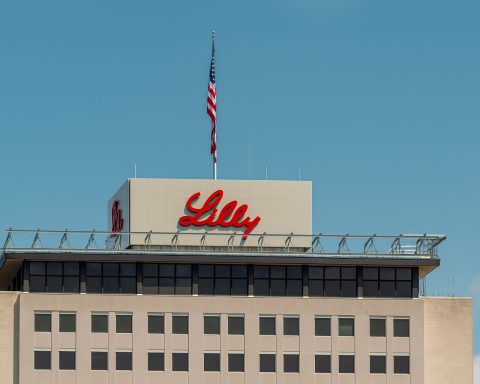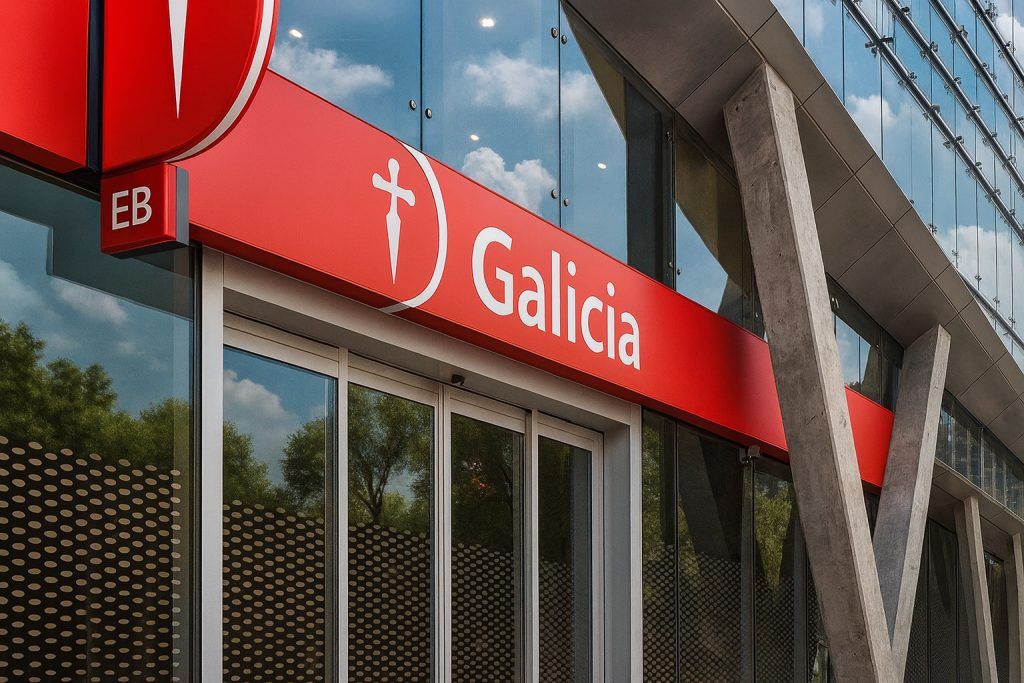- Advanced nuclear startup Oklo Inc. (NYSE: OKLO) has seen its stock surge over 500% in 2025, recently hitting an intraday high around $146 per share in early October [1]. This meteoric rally catapulted Oklo’s market capitalization to roughly $20.7 billion, reflecting a 1,200% gain year-over-year [2].
- U.S. government support ignited investor enthusiasm. The Department of Energy (DOE) selected Oklo for fast-track pilot programs to build advanced nuclear fuel fabrication facilities [3] and test reactors – part of a national push to revitalize nuclear energy. Oklo even broke ground on its first microreactor at Idaho National Lab in late September [4].
- Analysts are sharply split on Oklo’s outlook. Canaccord Genuity sees a “new nuclear age” emerging and initiated coverage of Oklo with a Buy rating and $175 price target [5] [6]. But a Bloomberg report warned that nuclear stock valuations may be “running ahead of reality” after Oklo’s 1,000%-plus surge [7], and many Wall Street targets sit far below current levels [8].
- Financial reality check: Oklo is pre-revenue and unprofitable, posting a -$0.18 EPS loss last quarter amid heavy R&D spending [9]. The company expects $65–80 million in cash burn for 2025 and no meaningful revenue until ~2026 at earliest [10], highlighting a long road to commercialization.
- Risks vs. rewards: Oklo’s innovative fast reactors and fuel recycling tech position it as a potential clean-energy game-changer, but skeptics cite overvaluation and execution risks. Consensus analyst rating is only Hold with an average price target around $83–90 (implying downside) [11]. Insiders have also cashed out over $50 million in shares during the rally [12], underscoring caution even as believers tout Oklo as a “Tesla of nuclear”.
Oklo’s Stock Goes Nuclear – A 2025 Rally Defying Gravity
Oklo has exploded onto the public markets with a spectacular stock rally in 2025. Shares of the Silicon Valley–based advanced nuclear startup have soared over 500% year-to-date, making it one of the year’s hottest stocks [13]. The stock hit an intraday peak of $146.40 in early October, up roughly 1,228% from a year ago [14]. By October 9, Oklo closed around $138 per share [15], and it spiked again on October 10 – briefly trading above $150 – before settling near $143.50 by that day’s close [16]. This meteoric rise lifted Oklo’s market capitalization to about $20.7 billion [17], a stunning valuation for a company that was virtually unknown a year prior.
What’s driving this nuclear frenzy? Much of the momentum stems from renewed optimism in nuclear energy’s role in a high-tech, carbon-constrained future. Oklo, notably backed by OpenAI co-founder Sam Altman, is positioning itself at the convergence of two powerful themes: advanced nuclear power and artificial intelligence (AI) demand for energy [18] [19]. As Bloomberg observed, “AI power boom” hype has turned next-gen nuclear stocks into a market obsession, with Oklo up over 1,000% in a year and peer NuScale tripling in value [20]. Investors have piled in, betting that Oklo could become a “new energy leader” akin to a Tesla of nuclear.
Critically, a flurry of government support and policy catalysts hit in late Q3 2025, turbocharging Oklo’s ascent. In late September, the U.S. Department of Energy (DOE) unveiled new initiatives to fast-track advanced reactor projects and domestic nuclear fuel production, and Oklo emerged as a major beneficiary [21]. News that Oklo was selected by the DOE for multiple pilot programs – effectively granting it a privileged role in building next-gen nuclear infrastructure – sent the stock into overdrive. FX Leaders reported Oklo shares jumped about 10% to $146 on the DOE announcement amid “investor euphoria,” even as voices cautioned that Oklo remains unprofitable [22]. GuruFocus likewise noted an 11.9% one-day surge to around $142 on the DOE news [23]. The rally briefly cooled in late September, but excitement reignited as new analyst endorsements and policy developments rolled in [24].
Government Deals Fuel a Nuclear Revival
Federal support has been pivotal in Oklo’s rise. On September 30, the DOE revealed Oklo was one of four companies conditionally selected for its Advanced Nuclear Fuel Line Pilot Program, which aims to kickstart domestic fuel fabrication for advanced reactors [25]. Under this fast-track program (launched via a Trump executive order), Oklo will build and operate three fuel-fabrication facilities to supply its Aurora reactors and other designs [26]. The goal: strengthen America’s nuclear supply chain and reduce reliance on imported reactor fuel, a national security priority [27] [28]. The DOE’s backing effectively positions Oklo at the heart of the U.S. strategy to revitalize nuclear infrastructure and drive clean energy innovation [29] [30].
Shortly after, Oklo also became the only publicly traded company in the DOE’s Reactor Pilot Program, aimed at streamlining reactor licensing and accelerating new builds [31]. Participation in these pilots allows Oklo to sidestep some of the Nuclear Regulatory Commission (NRC) red tape, as the DOE can authorize test reactors directly [32]. This is a game-changer for Oklo’s timeline – its reactors can move forward on federal land under DOE oversight, potentially shaving years off deployment. In fact, Oklo broke ground on its first reactor on September 22 at the Idaho National Laboratory (INL) [33]. The inaugural unit, a 75 MW_e Aurora Powerhouse, could now start operating by mid-2026 (ahead of earlier 2027–28 plans) thanks to the DOE fast-track [34]. This same project had faced a setback in 2022 when the NRC rejected Oklo’s initial license application for a smaller design, but now Oklo’s upsized reactor is proceeding under DOE’s wing [35].
U.S. officials underscore that such support is about energy security and climate goals. Deputy Energy Secretary James P. Danly stated the DOE fuel program ensures a “secure domestic fuel supply,” calling a strong nuclear sector “a key element of America’s energy security and prosperity.” [36] Both the Biden and Trump administrations have championed advanced nuclear as a way to supply clean, reliable baseload power while cutting dependence on Russian/Chinese uranium [37]. The Oklo deals stem from executive orders that President Trump issued to fast-track reactor permitting and reform the NRC process [38]. In short, Washington is betting on companies like Oklo to jump-start a nuclear renaissance – and investors have taken notice.
Beyond U.S. borders, global developments further stoked optimism. In recent weeks, the U.S. and U.K. announced a multibillion-dollar nuclear power cooperation agreement, which analysts say contributed meaningfully to Oklo’s stock surge [39]. Oklo itself is expanding internationally: on Sept 30 it inked a partnership with Sweden’s Blykalla to collaborate on reactor materials, fuel and licensing, even co-investing $5 million in Blykalla’s funding round [40]. Such moves signal Oklo’s ambition to play in the global advanced-reactor arena – a point not lost on bulls who see Oklo as a future worldwide nuclear supplier.
Big Vision: AI Data Centers, Microreactors and Fuel Recycling
Enthusiasts hail Oklo as a potential disruptor in clean energy, thanks to its bold technology and business model. The company’s flagship Aurora reactor is a compact, sodium-cooled fast reactor capable of 15–75 MW output [41]. Uniquely, Aurora is designed to run on recycled spent nuclear fuel, closing the fuel cycle and greatly extending fuel supply [42]. Oklo often notes the design’s pedigree – it builds on the proven passive safety features of the Experimental Breeder Reactor-II (EBR-II), a 20th-century fast reactor that ran safely for decades [43]. With a 20-year operating life without refueling and the ability to use nuclear “waste” as fuel, Oklo’s microreactor promises a steady, carbon-free baseload power source for years on end [44] [45].
In late September, Oklo literally broke ground on the first Aurora unit at INL, with Kiewit as lead constructor [46]. The company is concurrently developing a $1.68 billion fuel recycling plant in Oak Ridge, Tennessee that could reprocess used fuel into fresh fuel, creating over 800 jobs and tapping what Oklo touts as an energy resource “equivalent to five times Saudi Arabia’s oil reserves” locked in spent fuel [47]. If successful, Oklo’s vertically integrated approach – from fuel recycling to reactor operations – could revolutionize how nuclear energy is produced and used.
Crucially, Oklo is tying its mission to the AI and data center boom. Huge power-hungry cloud data centers need reliable, emissions-free electricity, and Oklo pitches its microreactors as ideal off-grid power sources for these facilities. The company has lined up a 14 GW pipeline of prospective customers, including AI data-center firms (e.g. Vertiv), energy companies (Liberty Energy), and even Korea Hydro & Nuclear Power for international projects [48] [49]. Though binding power purchase agreements aren’t signed yet, the interest is real – underscored by 14 tech giants recently pledging to help triple global nuclear capacity by 2050, aligning with Oklo’s vision [50].
What sets Oklo apart is its plan to own and operate its reactors (selling electricity or heat via long-term contracts) rather than just selling reactor units. Canaccord’s analyst George Gianarikas highlighted this “vertically integrated” model as a key differentiator, noting Oklo will build, own, and operate its powerhouses to give customers direct access to nuclear energy without huge upfront capital costs [51]. This utility-like strategy could yield steadier recurring revenue if reactors perform as promised. Gianarikas also pointed out Oklo intends to finance its reactor build-outs mainly with debt and leverage generous federal investment tax credits, minimizing dilution for shareholders [52]. “This financing mix could help bolster long-term returns on capital with, potentially, minimal requirements for additional equity,” he wrote [53]. In other words, Oklo might fund its ambitious projects without constantly issuing new stock – a boon to investors if it works.
Oklo is also pursuing niche deployments like a microreactor for the U.S. Air Force. It’s part of a pilot to install a small reactor at Eielson AFB in Alaska for resilient base power [54]. Furthermore, Oklo’s 2024 acquisition of Atomic Alchemy (a radioisotope producer) not only gave it isotope technology but also helped it qualify for the DOE’s reactor program [55] [56]. All these pieces – AI-driven demand, government contracts, unique tech, and strategic partnerships – feed the narrative of Oklo as a trailblazer in a new era of clean energy. As Zacks analysts put it, Oklo has “captured investor attention by merging nuclear technology with the AI-driven energy narrative that dominates today’s markets,” and with DOE backing, it’s emerging as “one of the key players shaping America’s next phase of nuclear and AI-powered energy development.” [57]
Bulls: “New Nuclear Age” Potential and Upside
The bull case for Oklo envisions a transformative growth story at the nexus of two massive trends: decarbonization of power and the AI revolution. “The world needs greater supplies of clean, baseload power,” argues Canaccord’s George Gianarikas, and even as AI’s rising electricity demand grabs headlines, “we anticipate strong long-term demand for nuclear energy regardless.” [58] In his initiation note, Gianarikas declared a “new nuclear age” is dawning, where nuclear assets will expand not only in absolute terms but also as a share of the global energy mix [59]. Oklo, in his view, is at the forefront of this renaissance – he calls Oklo a “vertically integrated, global distributed nuclear energy utility” in the making [60].
Reflecting this optimism, Canaccord initiated Oklo with a Buy and a $175 price target [61]. That target implied substantial upside (over 25%) even after Oklo’s huge run-up to ~$138. Gianarikas appeared on CNBC, doubling down on his thesis that nuclear is the solution for clean baseload power in an AI-powered economy [62]. He emphasized that Oklo’s model – from fuel recycling to reactor operations – could make it a “new energy leader” if executed well [63]. Other bulls echo that sentiment: for instance, Barclays maintained an Overweight rating and a $146 target, seeing Oklo as a long-term winner despite near-term volatility [64]. And as one market commentator quipped, with its tech pedigree and visionary ambitions, Oklo is sometimes touted as “the Tesla of the nuclear industry.”
Adding to bullish confidence is the options market and Wall Street forecasts hinting at more room to run. A recent analysis by Barchart noted that some longer-dated options are pricing in upside toward $190 for Oklo [65]. Meanwhile, analysts’ highest price targets reach $150+ [66], and the stock still carries a “Moderate Buy” consensus on some platforms [67]. By mid-2025, no fewer than 13 analysts were covering Oklo, and as of this week, 8 rate it a Buy or Strong Buy [68]. The bullish thesis is that Oklo’s first-mover advantage in advanced fission, coupled with strong policy support and partnerships, could allow it to dominate a potentially $10 trillion market (with global nuclear capacity projected to triple by 2050) [69] [70]. In short, proponents see enormous multi-decade growth potential if Oklo can fulfill its promise as a provider of constant clean energy for an AI-powered world.
Bears: Overheated Stock and Major Hurdles Ahead
Despite the glowing vision, many experts urge caution – or even outright skepticism – toward Oklo’s stock at current levels. The dramatic rally has arguably priced in years of future success long before the company proves it can build a working reactor or turn a profit. As Bloomberg News bluntly warned, nuclear company valuations may be “running ahead of reality,” given that no next-gen reactors are operating yet and timelines are tight [71]. Oklo epitomizes this dynamic: the company is pre-revenue (zero sales to date) and faces a long road of R&D, licensing and construction before any cash starts coming in. “Until the company has a working prototype, shares are likely to be volatile,” cautioned one Motley Fool analyst [72], who labeled Oklo an early-stage speculative bet that surged on sentiment rather than fundamentals.
Wall Street’s consensus is far less rosy than the bulls’ bold targets. As of this week, the average analyst rating for Oklo is only a Hold, and the average price target sits around $83–90 per share [73] [74] – 30-40% below the current trading range. In fact, several major banks have recently tapped the brakes on Oklo. Bank of America and Goldman Sachs both downgraded Oklo to Neutral, citing its stretched valuation and the reality that meaningful revenue is years away [75]. And in a dramatic counterpoint to Canaccord’s exuberance, BNP Paribas Exane slapped an Underperform rating with a $14 price target [76] – essentially predicting a collapse in Oklo’s stock price if initial projects stumble. While that is an outlier, it underscores how divided expert opinions are.
Valuation metrics are a flashing red light for the skeptics. Oklo’s share surge has pushed its price-to-book ratio above 40 [77] – an astronomical multiple more akin to a frothy tech startup than a power utility. (Most electric utilities trade at P/B ratios under 2 or 3.) The analysis site ts2.tech flatly flagged this as a “bubble” risk [78]. Zacks Investment Research gives Oklo a Value Score of ‘F’ (failing) based on traditional metrics [79]. The stock’s fundamentals are, by most measures, extremely weak: Oklo is losing money (–$0.18 EPS last quarter) and will continue to do so for the foreseeable future [80] [81]. Operating losses were $28 million last quarter with zero revenue [82]. Analysts project ongoing net losses at least through 2028 [83] given the massive costs to develop reactors and fuel facilities before any sales. As one observer put it, Oklo’s market cap implies success is a foregone conclusion, yet “the company remains pre‑revenue and is burning cash at a rapid pace” [84] – a disconnect that could spell trouble if there are delays or disappointments.
Insider behavior is adding to the wary outlook. In 2025, Oklo insiders and early investors have taken advantage of the price spike to sell significant shares. According to MarketBeat data, Oklo director Michael Stuart Klein sold 50,000 shares at ~$133.76 (netting over $6.6 million) and another executive sold ~41,000 shares around $70 [85]. In total, nearly 491,000 insider shares ( ~$52.7 million worth) were sold into the open market during the rally [86]. While insiders might sell for many reasons, the magnitude of these sales, amid a parabolic price increase, has raised eyebrows. GuruFocus warned that Oklo’s low Piotroski F-score of 3 (a measure of operational health) and insider selling signal that investors “should remain cautious” [87]. The heavy institutional ownership (over 85% of shares) means big funds could also rotate out if momentum falters [88].
Finally, there’s the execution and regulatory risk. Building first-of-a-kind nuclear plants on aggressive timelines is notoriously hard – even small modular reactors can face delays. Oklo must still submit a full Combined License Application (COLA) for its Idaho reactor and get approvals for the Tennessee recycling facility [89]. The DOE pilot programs help by providing a pathway, but they do not come with direct funding – Oklo is on the hook for all costs to design, construct, and operate these facilities [90]. Any setback in engineering, safety, or financing could derail Oklo’s progress. The stock’s wild volatility (huge swings on rumors or minor news) shows the market’s jitteriness. FX Leaders noted how Oklo’s price is extremely sensitive to regulatory updates and funding news, rallying and pulling back rapidly on speculation [91]. This volatility cuts both ways – it could surge higher on positive milestones, but could just as easily plunge if, say, a reactor build gets delayed or if risk appetite wanes.
Financial Reality: Burning Cash and Years from Revenue
Lost amid the hype is a simple fact: Oklo has not generated any revenue yet. The company is essentially funded by investor capital as it pursues development. In Q2 2025, Oklo reported a GAAP net loss of $0.18 per share, wider than analysts expected [92]. Operating losses were about $28 million for the quarter [93], reflecting heavy R&D and the costs of scaling up a nuclear venture from scratch. To keep the lights on, Oklo raised $441.6 million in Q2 via equity offerings [94] – diluting shareholders but boosting its cash reserves to ~$683 million [95]. That cash provides a runway for a couple of years at the current burn rate, but Oklo will likely need billions more to actually construct multiple reactors and fuel facilities. The good news is the company is well-capitalized for now; the bad news is future capital raises (debt or equity) are almost inevitable, and if the stock is lower by then, equity dilution could sting.
Oklo’s own forecasts suggest it won’t see significant revenue until 2026 or later [96], assuming its first reactor comes online and begins selling power by then. Wall Street expects no profits for many years – current consensus is that Oklo will remain in the red through at least 2028 [97]. This timeline could improve if things go perfectly (e.g. multiple reactors deployed on schedule), or slip further out if there are delays. It’s worth noting that even conventional nuclear projects often take 5-10+ years from start to finish; Oklo’s small reactors aim to be faster, but that still means patience is required. For investors, this is a high-stakes waiting game: the company must execute nearly flawlessly on technology, safety, and partnership milestones over the next 2–3 years to justify its valuation. Any substantial hiccup could puncture the market’s confidence, given how much optimism is already baked into the stock.
Another financial angle: competitive landscape and market size. Oklo’s valuation near $20 billion implies it will capture a big chunk of a future advanced nuclear market. Yet Oklo is not alone – other startups (like TerraPower, X-energy, etc. still private) and established players (like GE Hitachi with its SMRs, or publicly traded NuScale Power) are vying for similar opportunities. NuScale (NYSE: SMR), which has a different reactor design, has a market cap around $1.3 billion after tripling this year [98], still far below Oklo’s. That discrepancy partly reflects Oklo’s higher hype quotient and possibly its close alignment with the AI narrative. But it also raises questions: will Oklo truly outrun all peers in revenue and profits, or is the market simply assigning an excessive premium? As one commentator in InvestorsObserver put it, analysts warn that valuations may be disconnected from fundamentals in this nuclear rally [99].
Outlook: High Hopes vs. High Risks in a New Nuclear Era
As of October 10, 2025, Oklo embodies both the thrill and the peril of the nascent nuclear renaissance. On one hand, the company is racking up milestones: inclusion in multiple DOE pilot programs, breaking ground on its first plant, launching a fuel recycling project, and forging alliances from the U.S. Air Force to Swedish innovators [100] [101]. These achievements position Oklo as a leader in advanced fission technology at a time when policymakers and industries are desperate for reliable clean energy. The narrative is powerful – Oklo promises compact reactors that can be factory-built, deployed quickly, and even use nuclear waste as fuel. With climate pressures mounting and AI data centers gobbling power, Oklo’s vision hits a sweet spot of what the future might require. It’s no wonder investors have assigned it a sky-high valuation, essentially placing a bet on Oklo as a cornerstone of the next energy revolution.
On the other hand, execution risk looms large. Oklo’s current valuation “already reflects enormous expectations,” as ts2.tech’s deep-dive analysis noted [102]. The company must deliver technological success and navigate regulatory hurdles in record time – any major stumble could deflate the hype. Moreover, market sentiment can turn swiftly, especially if macro conditions change (e.g. interest rates rising, reducing appetite for zero-profit growth stocks) or if the AI buzz cools. Oklo’s stock has been a high-beta rollercoaster, swinging double digits on speculation alone [103]. This volatility is likely to continue. Investors should brace for turbulence as real-world results start to replace the initial story.
In sum, Oklo’s 2025 saga highlights both the promise and the pitfalls of betting on breakthrough technologies. The company sits at the nexus of crucial trends – clean energy, AI, and reindustrialization – and it has secured a enviable seat at the table with U.S. government support. If Oklo’s reactors work as hoped, the upside for energy and climate could be enormous, potentially validating the bold stock price. As one energy official put it, a strong nuclear sector is “key to America’s prosperity” [104], and Oklo is now a key player in that effort. But until Oklo lights up its first reactor, a degree of skepticism is warranted. As Bloomberg and others caution, the current nuclear stock boom may be ahead of itself [105]. For now, Oklo remains a high-risk, high-reward play – a bet on the future of nuclear energy that will either pay off in a revolutionary way, or remind everyone that in energy, not all that glitters is gold. The next 12–24 months, as Oklo races to build its Aurora reactor and fuel facilities, will be crucial in determining whether this nuclear “rocket stock” can sustain its altitude or comes back down to Earth.
Sources:
- Yahoo Finance / Motley Fool – Why Oklo Stock Popped Today [106] [107]
- Zacks Investment Research – Can DOE’s Fuel Line Project Accelerate OKLO’s Growth? [108] [109]
- ts2.tech – Nuclear Renaissance: Oklo’s DOE Contracts and 1,200% Rally – Can the Hype Last? [110] [111] [112] [113]
- ts2.tech – Oklo (OKLO) Nuclear Stock Skyrockets 500% on AI Data Center Hype – Bubble or Breakthrough? [114] [115]
- Benzinga – Oklo Emerges as a ‘New Energy Leader,’ Says Bullish Analyst [116] [117]; What’s Going On With Oklo Stock? [118] [119]
- Reuters – DOE selects Oklo for advanced nuclear projects [120] [121]
- Sustainable Tech News (via Bloomberg) – AI Power Boom Turns Nuclear Stocks Into New Obsession [122]
- MarketBeat / GuruFocus – Analyst and Insider Insights on Oklo [123] [124]
- StockAnalysis – Oklo Stock Price History (Oct 2025) [125]
- Oklo Inc. – Press Release & Investor Info [126] [127]
References
1. ts2.tech, 2. ts2.tech, 3. ts2.tech, 4. ts2.tech, 5. www.benzinga.com, 6. www.benzinga.com, 7. sustainabletechpartner.com, 8. ts2.tech, 9. ts2.tech, 10. ts2.tech, 11. ts2.tech, 12. ts2.tech, 13. ts2.tech, 14. ts2.tech, 15. stockanalysis.com, 16. stockanalysis.com, 17. ts2.tech, 18. www.reuters.com, 19. www.nasdaq.com, 20. sustainabletechpartner.com, 21. ts2.tech, 22. ts2.tech, 23. ts2.tech, 24. ts2.tech, 25. ts2.tech, 26. ts2.tech, 27. www.nasdaq.com, 28. www.reuters.com, 29. www.nasdaq.com, 30. www.nasdaq.com, 31. ts2.tech, 32. ts2.tech, 33. ts2.tech, 34. ts2.tech, 35. ts2.tech, 36. ts2.tech, 37. ts2.tech, 38. www.reuters.com, 39. www.webull.com, 40. ts2.tech, 41. www.benzinga.com, 42. ts2.tech, 43. www.benzinga.com, 44. ts2.tech, 45. ts2.tech, 46. ts2.tech, 47. ts2.tech, 48. ts2.tech, 49. ts2.tech, 50. ts2.tech, 51. www.benzinga.com, 52. www.benzinga.com, 53. www.benzinga.com, 54. ts2.tech, 55. ts2.tech, 56. ts2.tech, 57. www.nasdaq.com, 58. www.benzinga.com, 59. www.benzinga.com, 60. www.benzinga.com, 61. www.benzinga.com, 62. www.youtube.com, 63. www.benzinga.com, 64. ts2.tech, 65. www.webull.com, 66. www.webull.com, 67. www.webull.com, 68. ts2.tech, 69. www.webull.com, 70. www.webull.com, 71. sustainabletechpartner.com, 72. www.fool.com, 73. ts2.tech, 74. ts2.tech, 75. ts2.tech, 76. ts2.tech, 77. ts2.tech, 78. ts2.tech, 79. www.nasdaq.com, 80. ts2.tech, 81. ts2.tech, 82. ts2.tech, 83. ts2.tech, 84. ts2.tech, 85. ts2.tech, 86. ts2.tech, 87. ts2.tech, 88. ts2.tech, 89. ts2.tech, 90. www.reuters.com, 91. ts2.tech, 92. ts2.tech, 93. ts2.tech, 94. ts2.tech, 95. ts2.tech, 96. ts2.tech, 97. ts2.tech, 98. sustainabletechpartner.com, 99. ts2.tech, 100. ts2.tech, 101. ts2.tech, 102. ts2.tech, 103. ts2.tech, 104. ts2.tech, 105. sustainabletechpartner.com, 106. www.aol.com, 107. finance.yahoo.com, 108. www.nasdaq.com, 109. www.nasdaq.com, 110. ts2.tech, 111. ts2.tech, 112. ts2.tech, 113. ts2.tech, 114. ts2.tech, 115. ts2.tech, 116. www.benzinga.com, 117. www.benzinga.com, 118. www.benzinga.com, 119. www.benzinga.com, 120. www.reuters.com, 121. www.reuters.com, 122. sustainabletechpartner.com, 123. ts2.tech, 124. ts2.tech, 125. stockanalysis.com, 126. ts2.tech, 127. oklo.com







